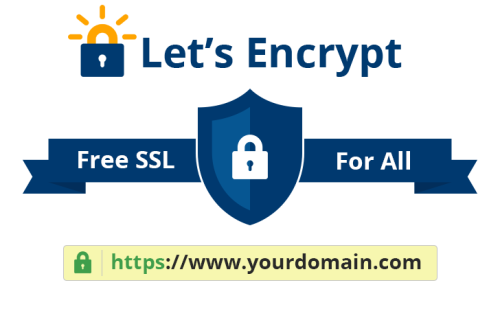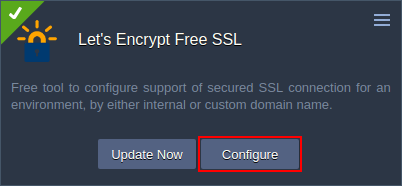-
.Net
-
Backup
-
Data Storage Containers
-
Docker Containers
-
Environment Management
- Swap-Domains
- Clone Environment
- Create Environment
- Environment Aliases
- Environment Aliases
- Environment Migration between Regions
- Environment Regions
- Environment Transferring
- Environment Variable
- Environment Variables
- Environment Variables(Apache meaven, Memcached)
- Environment Variables(Go)
- Environment Variables(JAVA)
- Environment Variables(Load Balancer)
- Environment Variables(Node.js)
- Environment Variables(PHP)
- Environment Variables(Ruby)
- How to Migrate a WordPress Site to BitssCloud PaaS
- How to migrate my environments from another Jelastic provider?
- HTTP Headers
- Java VCS Deployment with Maven
- Setting Up Environment
- Share Environment
- Why is my environment in sleeping mode?
- Show all articles (9) Collapse Articles
-
Java
- Environment Variables - Java custom Environment Variables
- Java App server Configuration
- Java Options and Arguments
- Multiple Domains on Tomcat server
- Secure Java Encryption and Decryption
- Spring Boot Standalone and Clustered Java Applications with BitssCloud
- Timezone Data for Java/PHP App Server
- Tomcat HTTP to HTTPS redirect
- WildFly server
-
LiteSpeed Web Server
-
OOM Killer
-
Python
-
Reseller SetUp
-
Secure Socket Layer (SSL)
-
Troubleshooting
-
Account Management
-
CDN
-
Databases
- Database Configuration
- Database Connection Strings
- Database Hosting in BitssCloud
- Environment Variables(Database)
- Galera Cluster not working
- How to export/Import Database via Command line
- How to install MSSQL server on Linux (2017)
- MariaDB/MySQL Auto-Сlustering
- MongoDB Database Backups
- PostgreSQL Database Backups
- PostgreSQL Database Replication
- PostgreSQL Master-Slave Cluster
- Remote Access to PostgreSQL
- Schedule Backups for MySQL and MariaDB Databases
- Scheduling Databases Backups
-
Domain Name Management
- Container Redeploy
- Custom Domain Name
- DNS Hostnames for Direct Connection to Containers
- How to Bind Custom Domain via A Record
- How to Bind Custom Domain via CNAME
- Multiple Custom Domains on an Nginx Web Server
- Multiple Domains with Public IP
- Multiple Public IP Addresses for a Single Container
- Setup WordPress Multisite Network with Domain Mapping and CDN
-
Jenkins
-
Load Balancing
-
PHP
- Creating Environment for PHP
- Deploy PHP Project Via GIT SVN
- How to Check Change PHP Version in BitssCloud
- How to create environment for AngularJs/ReactJs
- How to Enable PHP Extensions
- How to Install Custom PHP Application
- Ion cube Loader
- MariaDB PHP connection
- MySQL PHP Connection
- NGINX PHP
- PHP App Server Configuration
- PHP Connection to MongoDB
- PHP security settings
- PHP Session Clustering
- PostgreSQL PHP Connection
- Running Multiple Domain Names on Apache Server
- Security configuration for Apache
- Zero Downtime (ZDT) Deployment for PHP
- Show all articles (3) Collapse Articles
-
Release Notes
-
Ruby
-
SSH
-
Wordpress
-
Application Management
-
Cluster
-
Deploying Projects
-
Elastic VPS
- CentOS VPS
- Elastic VPS configuratation
- Elastic VPS with full root access
- Installation of cPanel in BitssCloud
- Java Console Application with CentOS VPS
- Linux VPS Access via Public IP
- Linux VPS Access via SSH Gate
- Setting Mail Server Inside CentOS VPS
- Setting Mail Server Inside CentOS VPS
- SSH Access to VPS Gate
- Ubuntu VPS
- Ubuntu with CSF Firewall
-
High Availability
-
Jitsi
-
Node.js
-
Pricing System
-
Request Handling
-
Scaling
- Application Server with horizontal scaling
- Automatic Horizontal Scaling
- Automatic Horizontal Scaling: Multi Nodes
- Automatic Vertical Scaling
- Database Horizontal Scaling
- Docker Containers Horizontal Scaling
- Horizontal Scaling
- Load Balancer with horizontal scaling
- Memcached horizontal scaling
- Storage Container
- VPS Horizontal Scaling
-
Traffic Distributor
-
General
- Apache & NGINX Modules
- BitssCloud Dashboard Guide
- Build and Deploy Hooks
- Cron Job scheduler
- FFMPEG Setup
- File Synchronization
- FTP Overview
- FTP/FTPS Support in BitssCloud
- How to Deploy Magento into BitssCloud PHP Cloud
- How to Enable Expert Mode in JCA
- How to open a support ticket to BitssCloud
- Installation of FTP
- Kubernetes Cluster
- MarketPlace
- Reduce Cloud Waste with Automatically Scheduled Hibernation
- Run Configuration
- SFTP Protocols for Accessing BitssCloud Containers.
- Supported OS Distributions for Docker Containers
- Timezone Addon
- Two-Factor Authentication
- Types of Accounts
- Varnish
- Websockets Support
- What is Cloudlet
- What is PaaS & CaaS
- WordPress AddOn
- Zero Code Change Deploy with No Vendor Lock-In for Smooth Migration across Cloud Platforms
- Show all articles (12) Collapse Articles
-
Go lang
-
Wordpress category
-
Data Storage Container
-
Memcached
-
Account & Pricing
Free SSL Let’s Encrypt Add-On
Let’s Encrypt Add-on for Automatic SSL Configuration of Your BitssCloud Environment

Let’s Encrypt is a free and open Certificate Authority, that simplifies and automates processes of browser-trusted SSL certificate issuing and appliance. This is achieved by obtaining a browser-trusted SSL certificate from Let’s Encrypt and attaching it to the environment entry point (i.e. either compute node or load balancer). Upon integrating such a certificate into your application, it will start supporting a secure connection via the HTTPS protocol.
SSL Configuration with BitssCloud Let’s Encrypt Add-On
This solution can be installed to any environment with one of the following BitssCloud certified or dockerized containers as an entry point:
- Load Balancers – NGINX, Apache LB, HAProxy, Varnish
- Java application servers – Tomcat 6/7/8/9, TomEE, GlassFish 3/4, Jetty 6
- PHP application servers – Apache PHP, NGINX PHP
- Ruby application servers – Apache Ruby, NGINX Ruby
This list is constantly extended to subsequently provide all software stacks support. The Let’s Encrypt add-on allows to configure SSL for:
- internal environment address, which is composed of environment name and platform domain, to be served with a dummy (i.e. not commonly trusted) SSL certificate; this option can be used for testing purposes.
- external domain(s), each of which should be preliminarily bound to the external IP of the corresponding node – either master application server instance or load balancer – via A Record or CNAME; provides trusted SSL certificates for production applications
To get deeper insights into how the Let’s Encrypt service works, refer to the official documentation.
How to Install Let’s Encrypt Add-On to BitssCloud EnvironmentClick on the marketplace option from the platform. Click Add-ons or search from the Market place search to figure out the Let’s Encrypt Free SSL and then click install.

Select the desired environment and then the node and also enter the external domain name, then click install.

The other option to install the certificate is from the environment add-on option.


Here, you need to:
1.provide External Domain(s) of the target environment. Here, the possible options are:
- leave the field blank to create a dummy SSL certificate, assigned to the environment internal URL (env_name.{hoster_domain}), for being used in testing.
- insert the preliminary linked external domain(s) to get a trusted certificate for each of them; if specifying multiple hostnames, separate them with either comma, space or semicolon.
2. select the corresponding Environment name within the expandable drop-down list
3. leave the automatically chosen Nodes layer value unchanged – it defines a layer with your environment entry point
Finally, click on Install to initiate the installation of the appropriate SSL certificate(s).
How to Renew SSL Certificate
Your Let’s Encrypt SSL certificate(s) will remain valid for 90 days. After this period expires, they need to be renewed for the encryption to remain active. By default, the required updated SSL certificates are requested and applied automatically 30 days before expiration (you’ll get the appropriate email notification). Such a checkup is performed once per day based on the appropriate cron job. If needed, the exact time can be specified through adjusting the corresponding “cron Time”: “0 ${fn.random(1,6)} * * *” setting within this package manifest file.To renew certificate files manually, click the Add-ons button next to the appropriate environment layer and use the Update Now button within add-on’s panel.

Also, your SSL certificates can be updated by add-on re-installation for the same domain name(s). Herewith, adding new or specifying different domain name(s) during this procedure will cause the complete replacement of used certificates.
How to Reconfigure SSL Certificate
In case of necessity, the already existing Let’s Encrypt add-on can be adjusted to match new requirements (i.e. to replace the currently used domain names with a list of new ones).

Note: To avoid security issues, a new certificate will be issued, even in the case of removing domain name(s) from the existing one.
Just click the Configure button within the Let’s Encrypt panel and type the domain name in the appeared pop-up window.
